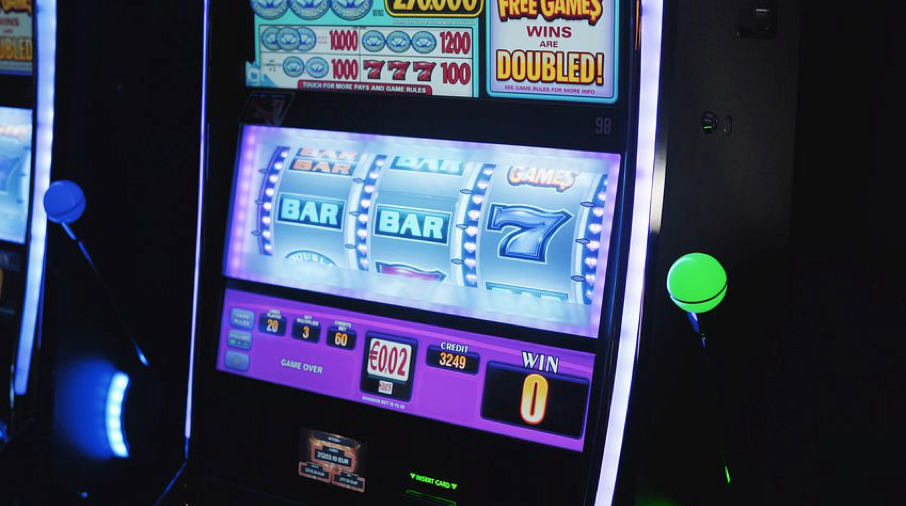The growth of the casino market in the last decade has been unprecedented especially concerning the rise of mobile apps and gaming on the go. The relevant technology has advanced to a point where consumers have access to fast mobile internet (including unlimited data plans), powerful handheld devices and cutting-edge software developed for those devices.
As a result of shifting into the digital world, casino games have gone through a period of modernisation and some of the current iterations bear little resemblance to their predecessors. One particular area of intense popularity is that of fruit machines. The amount of slot machine paylines on some modern games can number in the hundreds and it has left a few early fruit machine enthusiasts feeling overwhelmed and ostracised.
We hope to shed some light on the payline mechanisms often incorporated in modern slots and how best to exploit them in order to maximise returns from your gaming session.
How does a slot machine work?

Although slot machines are fairly easy to understand, with many enhancements made to the game such as paylines, it is crucial to develop a better understanding before playing.
The earliest slot machines consisted of three reels each displaying a variety of printed symbols. When a player pulled the lever—where the term one armed bandit originates—the reels would spin, independently from one another and come to rest displaying one of the symbols in the viewing window.
If all three symbols matched, you were a winner and the prize you’d win depended on the value of the symbols, which varied from game to game. The original Liberty Bell machine, the first of its kind, paid out the jackpot for three matching bell symbols.
What’s a payline?
At its most rudimentary, the payline is the imaginary line that runs across the centre of the display window on which you need matching symbols to fall. As fruit machines have become more complex with an increased number of reels so too have the number of paylines gone up.
If you are to consider the central payline as payline number one, modern machines include lines that run parallel to it, both above and below, diagonally, from each corner to the opposing corner and also lines that zig-zag and snake across the viewable portion of the reels. To know exactly which paylines are in play on your machine requires some prior inspection as it varies significantly from game to game.
Most games will allow the player to select how many paylines they wish to be in play (variable payline games), with the number of active paylines often multiplying your principle bet. More paylines equals a higher chance of winning but the money wagered will also be higher.
It can feel like forgetting to buy a lottery ticket and seeing your numbers come up when you see a jackpot set of symbols appear on an inactive payline. Fixed payline machines do not give the user the option to customise the number of lines that are in play.
To make things more complicated, as slots have entered the digital domain, the constraints of real-world physics are no longer applicable and there are a number of mechanisms employed by some developers that multiply paylines into the hundreds. Even seasoned fruit machine aficionados have some difficulty keeping up with games like this.
Which type of machine is for me?

Purists may enjoy playing with paylines in single figures or even just one to keep things simple and comprehensible. Other players prefer the assault on the senses that dozens of paylines brings with some wins occurring without the player even realising.
The option to reduce the number of paylines does mean that both parties can be catered for on most games. With fewer lines selected, wins will come less frequently but your balance will decrease at a slower rate. Gaming in this fashion is advised for people that prefer longer session times at the expense of decreasing the chance of winning the jackpot.
The maths of slots
While increasing the number of paylines in play statistically reduces the amount of time you’ll have to wait before winning, you will also be spending money at a faster rate. Essentially you are only making the game shorter by playing in this way.
The more important numbers to look out for are the return to player (RTP) of a slot. This is usually expressed as a percentage and represents the statistical return a player is likely to receive from their outlay over a large number of spins. An RTP of 97% indicates a 3% house edge.
Slots are also described as having either low or high volatility. A high volatility slot pays out less frequently, but the wins are bigger; a low volatility slot pays out more often but in smaller amounts.
Like any game of chance, however, in the short term anything can happen. You could take one spin on a highly volatile slot with a low RTP and hit the jackpot, or conversely, tens of spins at a low volatile slot might consistently draw blanks. These figures are still useful to have in mind when deciding which kind of machine is for you.
Approaching a game with a more solid understanding of its inner workings means you won’t feel overwhelmed and confused by what’s going on. Having that confidence means you’re much more likely to come away having had a positive experience.
Disclaimer: This article contains sponsored marketing content. It is intended for promotional purposes and should not be considered as an endorsement or recommendation by our website. Readers are encouraged to conduct their own research and exercise their own judgment before making any decisions based on the information provided in this article.



































